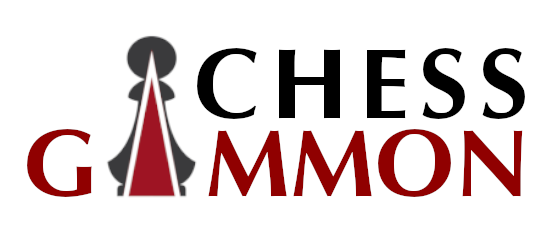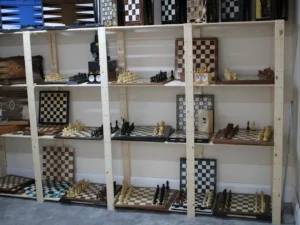- Introduction to the Mieses-Kotroc Variation
- History of the Scandinavian Defense
- Key Ideas and Principles of the Mieses-Kotroc Variation
- Common Variations and Lines
- Pros and Cons of Playing the Mieses-Kotroc Variation
- Notable Games and Players in the Mieses-Kotroc Variation
- Tips and Strategies for Successfully Playing the Mieses-Kotroc Variation
Welcome to the exciting world of chess openings! Today, we’re diving into the intriguing Mieses-Kotroc Variation, a dynamic choice for players looking to spice up their games. For additional popular chess moves, please see 40 Famous Chess Moves to Learn.
Introduction to the Mieses-Kotroc Variation
Named after two prominent players, Jacques Mieses and Gideon Kotroc, the Mieses-Kotroc Variation is a bold response for black in the Scandinavian Defense. If you’re looking to catch your opponent off guard and challenge them to think outside the box, this variation might just be the perfect choice for you.
By choosing the Mieses-Kotroc Variation, you are veering off the well-trodden path of traditional chess openings. This deviation can lead to unique and exciting positions on the board, giving you the opportunity to showcase your creative prowess and strategic skills.
But remember, with great excitement comes great responsibility. It’s crucial to understand the ideas and principles behind this variation to navigate the complexities of the positions that arise. Don’t be afraid to experiment and discover new possibilities as you explore the depths of this fascinating opening choice.
Whether you’re a seasoned player looking to shake up your repertoire or a beginner eager to explore uncharted territory, the Mieses-Kotroc Variation offers a thrilling journey through the world of chess openings. So, buckle
History of the Scandinavian Defense
Let’s delve into the fascinating history of the Scandinavian Defense, also known as the Center Counter Defense. This bold and aggressive opening is characterized by the moves 1.e4 d5, where Black immediately counters White’s e4 pawn with their d-pawn, taking aim at the center.
The Scandinavian Defense has been played for centuries, with its roots tracing back to the earliest days of chess. It was first analyzed in the 16th century by players like Gioachino Greco and was even played by the legendary World Champion Bobby Fischer in the 1960s.
One of the key reasons the Scandinavian Defense has stood the test of time is its disruptive and unconventional nature. By immediately challenging White’s central pawn, Black aims to create imbalances on the board and dictate the pace of the game from the outset.
Through the years, the Scandinavian Defense has undergone various developments and refinements as players have explored its nuances and possibilities. Today, it remains a popular choice among players looking to steer the game into uncharted territory and catch their opponents off guard.
With its rich history and strategic depth, the Scandinavian Defense offers a unique and exciting playing experience for both beginners and seasoned players alike. So the next time you sit down at the board, consider channeling the
Key Ideas and Principles of the Mieses-Kotroc Variation
Now let’s delve into the key ideas and principles of the Mieses-Kotroc Variation in the Scandinavian Defense. Understanding these fundamental concepts will help you navigate through this intriguing opening with confidence and success.
1. Control the Center
As with many openings in chess, controlling the center is crucial in the Mieses-Kotroc Variation. By occupying the central squares with your pawns and pieces, you can exert influence over the board and limit your opponent’s options. Aim to establish a strong presence in the center early on.
2. Develop Your Pieces
Developing your pieces efficiently is essential in any opening, including the Mieses-Kotroc Variation. Ensure that you bring out your knights and bishops to active squares, enabling them to contribute to your position and supporting your central control.
3. Create Imbalances
One of the intriguing aspects of the Mieses-Kotroc Variation is its potential for creating imbalances on the board. By deviating from traditional lines and structures, you can surprise your opponent and introduce asymmetry into the position. Embrace the opportunity to shake up the game.
Common Variations and Lines
When diving into the world of the Mieses-Kotroc Variation in the Scandinavian Defense, it’s essential to familiarize yourself with some of the common variations and lines that may arise during your games. Understanding these variations will not only help you navigate the opening confidently but also give you a strategic edge over your opponent. Let’s explore some of the key variations:
Main Line: 1.e4 d5 2.exd5 Nf6
One of the main lines in the Mieses-Kotroc Variation involves Black playing 1.e4 d5 2.exd5 Nf6. This move aims to put pressure on White’s e4 pawn and challenge the center control from an early stage. Black’s knight on f6 is a mobile piece that can be used to support the d5 pawn or be developed to other squares.
Agressive Options: 3.d4 and 3.c4
White has two common aggressive responses to the Mieses-Kotroc Variation. One option is to play 3.d4, solidifying the center and preparing for further development. Another option is 3.c4, which aims to break open the center and create imbalances early on. Both moves offer different types of positions and require careful consideration from both sides.
Exchange Variation
Pros and Cons of Playing the Mieses-Kotroc Variation
So, you’ve decided to explore the Mieses-Kotroc Variation in the Scandinavian Defense. Congratulations! This variation offers a unique and intriguing approach to the game, but like any opening, it comes with its own set of advantages and disadvantages. Let’s break them down:
Pros:
Surprise Factor: One of the biggest pros of playing the Mieses-Kotroc Variation is that it’s not as commonly seen as other variations. This can catch your opponent off guard and disrupt their usual strategy, putting them on the back foot right from the start.
Aggressive Play: The Mieses-Kotroc Variation allows for aggressive play right out of the gate. With early pawn advances and piece development, you can quickly seize the initiative and put pressure on your opponent.
Complexity: This variation leads to complex and unbalanced positions, which can create opportunities for tactics and dynamic play. If you enjoy sharp, tactical positions, the Mieses-Kotroc Variation could be right up your alley.
Control of the Center: By playing the Mieses-Kotroc
Notable Games and Players in the Mieses-Kotroc Variation
When delving into the world of chess, it’s always fascinating to explore notable games and the players who have made their mark using specific variations. The Mieses-Kotroc Variation is no exception, with its rich history and impressive maneuvers that have left a lasting impact on the game.
Notable Games:
One of the most famous games featuring the Mieses-Kotroc Variation is the encounter between Grandmasters Magnus Carlsen and Levon Aronian. In this intense battle, Carlsen, known for his strategic brilliance, showcased his skills by maneuvering his pieces expertly in the opening phase to gain a positional advantage. Aronian, a formidable opponent in his own right, fought back valiantly but ultimately succumbed to Carlsen’s relentless pressure.
In another memorable game, former World Champion Garry Kasparov faced off against Vladimir Kramnik in a high-stakes tournament. Kasparov, renowned for his aggressive playing style, employed the Mieses-Kotroc Variation to surprise his opponent and gain a slight edge in the middlegame. Kramnik, a master of defense, put up a strong resistance, but Kasparov’s calculated sacrifices ultimately led to his victory.
Tips and Strategies for Successfully Playing the Mieses-Kotroc Variation
Welcome to the exciting world of the Mieses-Kotroc Variation in the Scandinavian Defense! If you’re looking to spice up your chess game with this dynamic line, here are some tips and strategies to help you navigate through the complexities of this opening:
1. Understand the Key Concepts:
Before diving into the Mieses-Kotroc Variation, make sure you have a solid understanding of the key ideas and principles behind this line. Familiarize yourself with the main themes, pawn structures, and typical plans that arise in this variation.
2. Develop Your Pieces Efficiently:
In the Mieses-Kotroc Variation, it’s crucial to develop your pieces quickly and harmoniously. Aim to control the center, coordinate your pieces effectively, and maintain a solid pawn structure to keep your position dynamic and flexible.
3. Be Flexible in Your Approach:
Flexibility is key in the Mieses-Kotroc Variation. Stay open to different possibilities and be willing to adapt your plans based on your opponent’s moves. Look for opportunities to seize the initiative and exploit any weaknesses in your opponent’s position.






